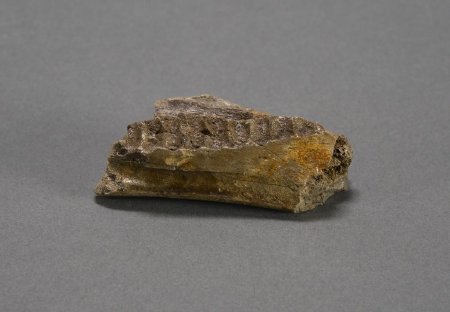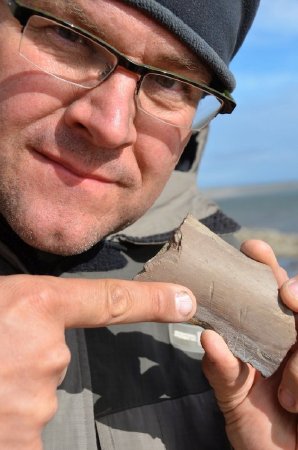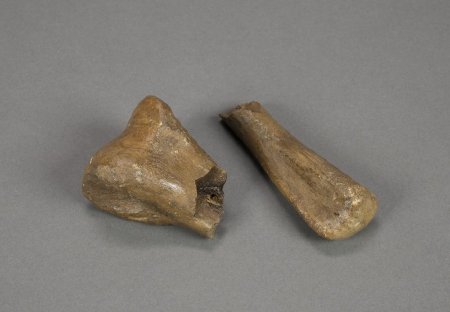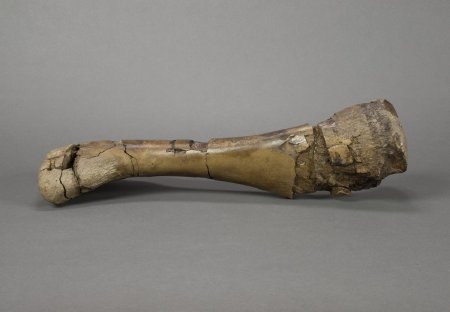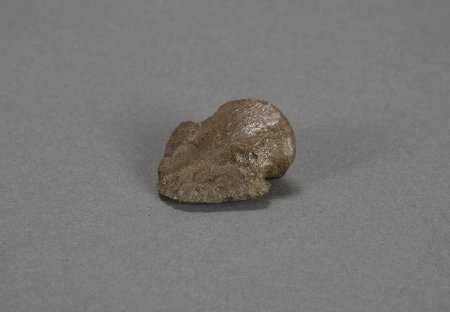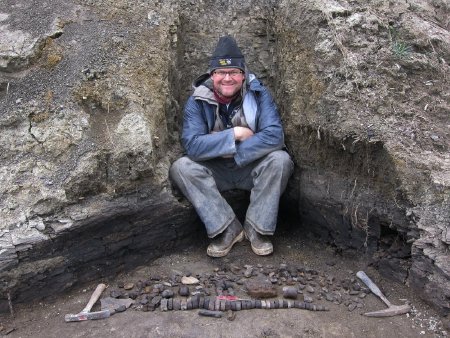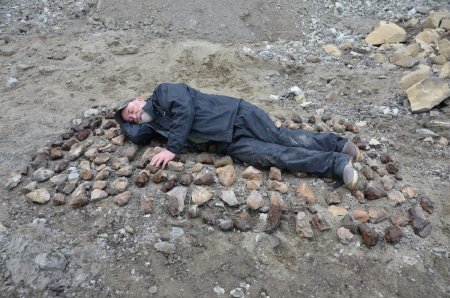Cruisin' the Fossil Coastline
Duckbills Galore
Over ninety-five percent of the bones collected from the Liscomb Bone Bed are from the duckbilled dinosaur Ugrunaaluk. The vast majority of the bones recovered are from juveniles. Such an abundance of juvenile dinosaur bones raises all kinds of questions: Did they all die together? Did they die at the same time? What killed them? And where were the moms and dads?
Different theories have been proposed over the years, with the most likely cause being a flood event, perhaps a tsunami. Maybe a large herd of young duckbills tried to cross a swollen coastal river, and there were only a few adults tending to them. Perhaps it was disease or a sudden cold snap that killed them.
Broken teeth of carnivores have been recovered among the duckbill bones, including those of the tyrannosaur Nanuqsaurus, so tyrannosaurs may have been scavenging or may have had role in the demise of the juveniles.
The majority of predator teeth recovered at the Liscomb site are from a smaller carnivore that belonged to the notorious raptor clan called Troodon. It is likely that these raptors were covered in feathers. The name Troodon means "wounding tooth," and if you look closely you can see why - the teeth are serrated and razor sharp. Troodons may have hunted in packs like modern wolves do. Their large eyes would have been lethally efficient in long periods of polar darkness.
Different theories have been proposed over the years, with the most likely cause being a flood event, perhaps a tsunami. Maybe a large herd of young duckbills tried to cross a swollen coastal river, and there were only a few adults tending to them. Perhaps it was disease or a sudden cold snap that killed them.
Broken teeth of carnivores have been recovered among the duckbill bones, including those of the tyrannosaur Nanuqsaurus, so tyrannosaurs may have been scavenging or may have had role in the demise of the juveniles.
The majority of predator teeth recovered at the Liscomb site are from a smaller carnivore that belonged to the notorious raptor clan called Troodon. It is likely that these raptors were covered in feathers. The name Troodon means "wounding tooth," and if you look closely you can see why - the teeth are serrated and razor sharp. Troodons may have hunted in packs like modern wolves do. Their large eyes would have been lethally efficient in long periods of polar darkness.



